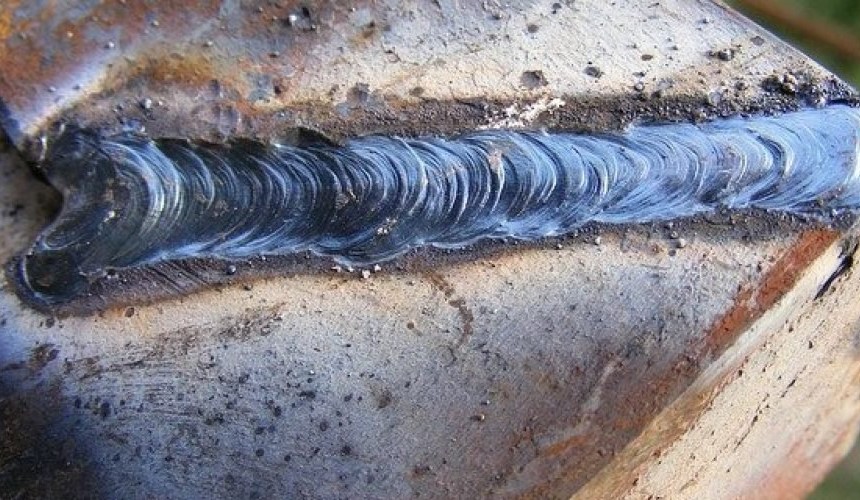Just How to Prevent Weld Undercut: Crucial Tips for Welders
Just How to Prevent Weld Undercut: Crucial Tips for Welders
Blog Article
Essential Tips for Welders: Avoiding Undercut Welding and Ensuring Stronger Weld Joints
In the realm of welding, achieving long lasting and strong weld joints is the cornerstone of producing high-grade job. One typical challenge that welders commonly come across is undercut welding, which can jeopardize the integrity of the weld joint.

Recognizing Undercut Welding
Undercut welding is a typical welding defect that happens when the weld steel fails to appropriately fill the groove and leads to a groove-like clinical depression along the weld bead. This flaw damages the weld joint, making it vulnerable to fracturing and failure under tension. Damaging can be caused by different variables, consisting of excessive welding present, high welding rate, inappropriate electrode angle, incorrect electrode size, and bad welding strategy.
One of the main reasons for undercut welding is an inequality in between the welding current and the welding speed. If the welding current is as well high or the welding rate is also fast, the weld metal may not effectively load the groove, leading to undercutting. Furthermore, utilizing an electrode that is as well huge can cause a comparable end result, as the excess steel can not properly flow into the groove.
To stop undercut welding, welders must guarantee they are making use of the correct welding parameters, maintain a suitable electrode angle, choose the suitable electrode size, and method appropriate welding methods. By attending to these aspects, welders can lessen the threat of damaging and produce stronger, much more reputable weld joints.
Appropriate Welding Method
Effective welding technique plays a vital function in ensuring the top quality and stability of weld joints. One basic aspect of appropriate welding method is keeping the correct angle and range in between the welding weapon and the work surface.
In addition, a consistent and constant hand motion is essential for developing strong and durable weld joints. Welders must aim for smooth, consistent movements to make sure also distribution of the weld product. Proper adjustment of the welding gun and filler material is additionally essential to attaining optimal infiltration and blend.
Additionally, regulating the heat input and choosing the ideal welding specifications based upon the product being welded are important consider accomplishing high-quality welds - Preventing weld undercut. Welders must adhere to the recommended settings supplied by welding treatment specifications and change them as required based upon the specific requirements of the job. By understanding correct welding techniques, welders can substantially boost the toughness and reliability of their weld joints
Choosing the Right Electrode
When taking into consideration the relevance of choosing the right electrode in welding applications,Maintaining the correct angle and distance between the welding gun and the workpiece is fundamental. The choice of electrode plays an important function in figuring out the high quality and stamina of the weld joint. Electrodes are available in different types, each developed for particular purposes and materials.
To start with, choosing the proper electrode diameter is vital. Thinner electrodes appropriate for welding thin materials, while thicker electrodes are much better for thicker products and higher heat applications. Matching the electrode diameter to the density of the work surface assists accomplish a balanced weld.
Second of all, recognizing the product composition of the electrode is crucial. Different electrodes are developed for welding specific materials like steel, stainless-steel, light weight aluminum, or cast iron. Making use of the right electrode material guarantees good blend and lessens the danger of problems in the weld.
Lastly, taking into consideration the welding placement and method is essential when choosing the electrode kind. Particular electrodes are much better suited for upright or above welding positions, while others function well for flat or straight positions. Picking the ideal electrode based on the welding strategy enhances the total weld high quality and honesty.
Preparing the Base Metal
To ensure a successful welding procedure, what first steps should be taken when preparing the base metal for welding? Furthermore, any kind of existing weld product or residue from previous welding ought to be eliminated to make certain a clean surface for the new weld.

Carrying Out Post-Weld Evaluations

After performing these analyses, welders need to compare the results versus sector requirements and project requirements to make certain that the weld joint fulfills all needed requirements. Any discrepancies or inadequacies found during the post-weld examination must be quickly addressed via proper corrective measures to ensure the weld's integrity. By faithfully doing post-weld inspections and without delay attending to any concerns, welders can support the top quality and dependability of their work, eventually contributing to the safety and security and longevity of the bonded structures.
Verdict

In verdict, avoiding undercut welding and ensuring stronger weld joints call for a combination of correct welding technique, selecting the right electrode, preparing the base metal appropriately, and conducting post-weld assessments. By understanding the reasons for undercut welding and applying the required preventative measures, welders can produce top notch weld joints that meet market criteria and ensure the structural integrity of the welded elements.
Undercut welding is an usual welding defect that happens when the weld steel fails to correctly load the groove and results in a Click Here groove-like depression along the weld bead (Preventing weld undercut). Undercutting can be triggered by numerous factors, view it including extreme welding present, high welding rate, inappropriate electrode angle, wrong electrode size, and poor welding method
One of the primary factors for undercut welding is an inequality in between the welding current and the welding speed. If the welding current is too high or the welding speed is too quick, the weld metal may not blog here effectively load the groove, leading to damaging.Keeping the correct angle and distance between the welding gun and the workpiece is fundamental when considering the importance of choosing the best electrode in welding applications.
Report this page